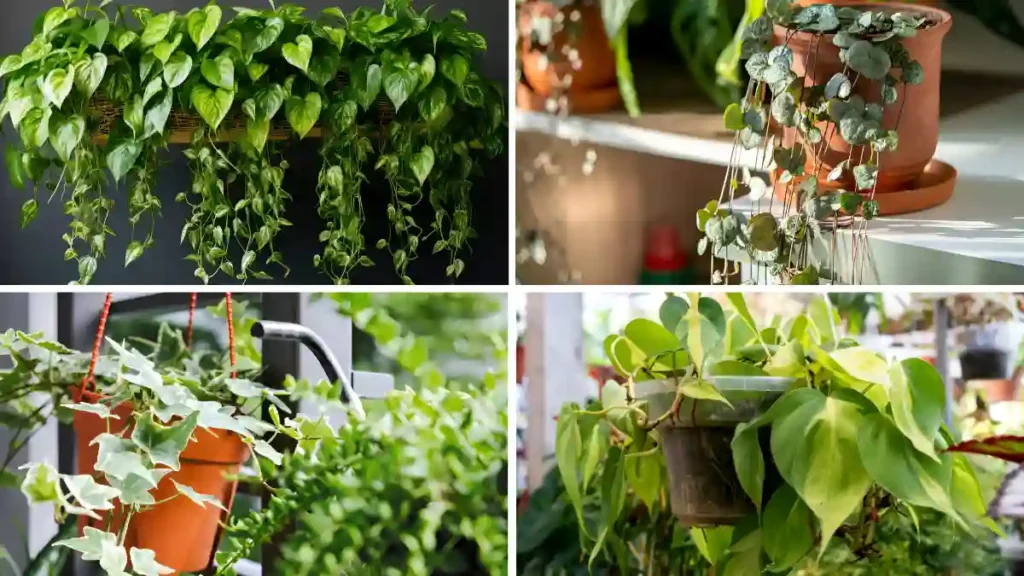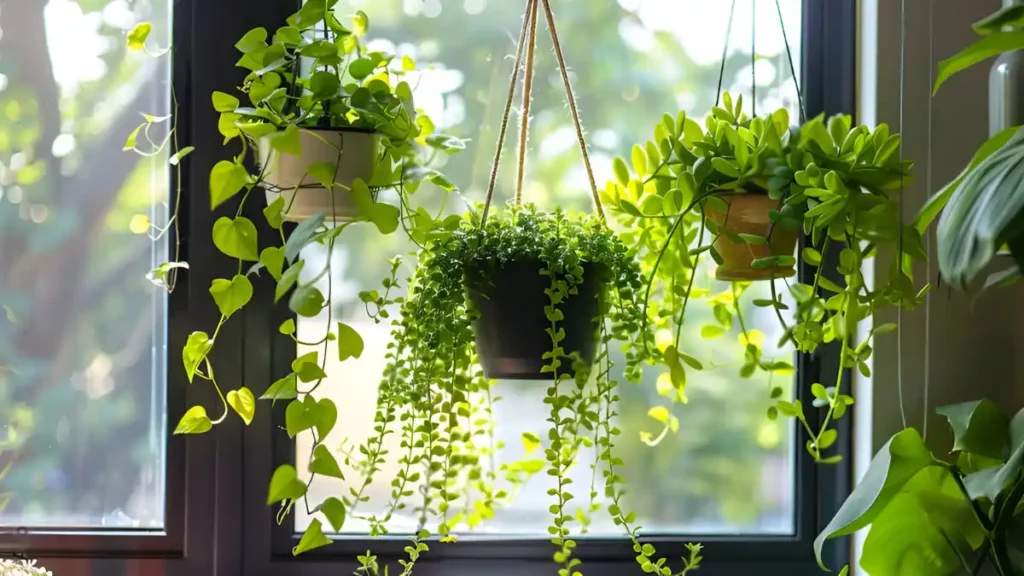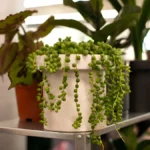Greetings from the world of tasteful and uncomplicated indoor vine plants! With their flowing vines and thick foliage, these enchanting botanical wonders subtly enhance the ambiance of any indoor space while adding a touch of nature’s beauty. These plants are great for novices and experienced gardeners alike, as they are not only visually beautiful but also reasonably low maintenance, which makes them perfect additions to any indoor space. Try these low-maintenance vines that grow well inside.
Here are 6 types of indoor vine plants that you might consider:
Heartleaf philodendron (Philodendron Hederaceum)
Heartleaf philodendron shares similarities with pothos in appearance, but its leaves are slightly smaller and more elongated. It is also equally easy to care for and can withstand low light levels.
Spider Plant (Chlorophytum Comosum)
Although they are not vines in the usual sense, spider plants generate long, arching stems from which dangling plantlets provide a cascade impression. They can survive in a variety of light settings since they are highly adaptive.
Pothos (Epipremnum aureum)
One of the simplest vine plants to grow indoors is pothos. It can survive in low light levels and has heart-shaped leaves that come in a variety of colors of green. Pothos is renowned for its ability to purify the air.

String of Hearts (Ceropegia woodii)
Grown in hanging baskets, this delicate trailing plant features heart-shaped leaves. Once established, it prefers bright, indirect light and sparing irrigation.
Philodendron (Philodendron spp.)
Philodendrons are another low-maintenance option. They come in a variety of forms, some of which are vining. They can withstand a variety of light conditions and have glossy, deep green foliage.
English Ivy (Hedera helix)
One traditional option for indoor vines is English ivy. It can be trained to climb or cascade, and its leaves are tiny and lobed. English ivy likes constantly moist soil and bright, indirect light.
Conclusion:
Upon further inspection, it becomes clear that a few indoor vine plants are particularly great options. Pothos, philodendron, English ivy, and spider plants are some of the plants that are highly valued for their flexibility, low maintenance requirements, and visual appeal. With their rich foliage and trailing vines, these plants not only brighten interior spaces but also have the added benefit of cleaning the air and thriving in a variety of lighting settings. The ideal indoor vine plant for you will ultimately rely on your tastes, available space, and the characteristics of your house. Any of the aforementioned solutions, though, would surely add some beauty and greenery to your interior space.
Certainly! If you’d like to learn more, please consider following our WhatsApp Channel: Harvest Gardening
A frequently asked questions:
Q1: How often should I water indoor vine plants in low light?
A1: Although the frequency of watering might vary depending on temperature and humidity, indoor vine plants in low light levels should normally be watered when the top inch of soil feels dry to the touch.
Q2: Can all indoor vine plants be grown on a trellis?
A2: Well, not every indoor vine plant can be grown on a trellis. Certain vine plants may not do well on a trellis framework because of their delicate or trailing growing tendencies. For trellis development to be successful, vine plants that have climbing or twining tendencies must be selected.
Q3: How often should I repot my indoor vine plants?
A3: Repotting indoor vine plants is usually necessary every one to two years or when the roots of the plant outgrow the container. When a plant becomes root-bound or its roots poke out of drainage holes, it’s time to repot it.



